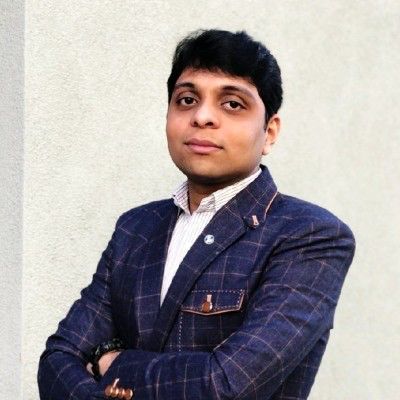The iPhone was revolutionary when it was introduced in 2007, and ever since, Apple has aimed to maintain that momentum by offering ever-more powerful features in a slimmer case.
At the forefront of this ‘doing more with less’ philosophy is award-winning electrical engineer Kush Desai, who is helping pioneer the rear camera tech in current and future iPhone Pro and Pro Max models.
Among the many issues affecting the design and build of the new phones are the twin issues of signal and power integrity. Signal integrity is the ability of an electrical signal to be transmitted without it being weakened or degraded.
Power Integrity involves maintaining a stable voltage and current within the phone to ensure a constant supply of electrical energyfor all its software and apps.
Both are equally important in maintaining the effective running of powerful devices. Gujarat Technological University and San Jose State University graduate Kush, who has worked for Apple in Cupertino, CA, since 2021, first as an intern and then as a camera electrical engineer, said, “Signal and Power Integrity are fundamental to the functionality of smartphones.
“As we push for higher data rates and more efficient power usage, the complexity of maintaining integrity in these systems has increased exponentially.”
Smartphones are now more compact than when the first iPhone was introduced nearly two decades ago. The chips and sensors that operate the tech are thinner and more compact, but the phones feature many more features, including more powerful front and rear cameras.
The high density of these components is another issue for Kush and his fellow designers.
He said: “The proximity of various high-speed interfaces and wireless signals can lead to crosstalk and electromagnetic interference, which significantly impacts signal integrity. Crosstalk happens when signals are sent down a wire, electromagnetic fields develop around it, and if wires are too close together, it can result in crosstalk.”
Alongside this, Kush has to consider power integrity, which is challenged by the varying power demands of the processors and functionalities built into the phone.
“Smartphones now need to manage highly dynamic power requirements due to multi-core CPUs, high-resolution displays, power-hungry cameras, and multiple wireless technologies, all while saving and maintaining an effective battery life,” Kush said.
Designers like Kush can employ several techniques to tackle these multiple issues. These include using advanced material, shielding solutions, optimized floor-planning, and efficient grounding topology to reduce integrity issues and enable minimal interference.
“I enjoy the multifaceted nature of my profession. It’s not only about engineering execution but also about contributing as a leader, mentor, and owner of product architecture. I get involved in cost, marketing and supply chain aspects as well.
Electrical engineers like me are now at the center of these decisions.”
Another technique is the careful design of printed circuit boards (PCBs) and the practical solution of building all the phone’s components to deliberately optimize its signal pathways, causing as little interference as possible.
To achieve this, the designers use simulation tools to help anticipate problems and solutions as they work through their designs: “Simulation software allows us to model distribution of electromagnetic fields within and outside of PCB before physical prototypes are developed. This process saves time and money,” says Kush.
Managing the electrical power in a smartphone is also a way to make the device even more effective. These systems adjust the power based on how the device operates and the conditions in which it operates, which we call it ‘Dynamic Power Scaling’. The key is ensuring the power level is stable across all the necessary components.
High-quality capacitors and inductors (components that can store electromagnetic energy) can also help build a stable power supply by dealing with high-amplitude, high-frequency load transients.
Kush said: “Integrating smart Power Management ICs (PMIC) helps us distribute stable power more efficiently, which is critical for system thermal performance and battery life. These are critical for maintaining battery life and device performance.”
As for the future, thanks to AI, Kush is enthusiastic about integrating emerging technologies into a single device.
“We are already exploring the potential of AI to predict and manage power and signal integrity issues in real-time, which could be the big game changer in smartphone reliability and performance in the years ahead,” he explains.
The rapidly developing pace of smartphones beyond the current 5G is also why Kush’s work is vital. New phones in the next decade must adapt to 6G signals.
“The next generation of smartphones must operate across a broader range of frequencies and manage even more complex interactions between signals. AI is without doubt a way to achieve this.”
All of these innovations fall under the umbrella of a greener agenda, the aim of which is to make smartphones more environmentally friendly from their manufacture to the way they function.
Kush is also mindful of how this has implications for all the decisions made in his role at Apple. “It’s crucial we design smartphones not only for performance and efficiency but also with sustainability in mind.
“This includes everything from reducing the number of components used to improve the energy efficiency of each device. Maximizing the power usage is a top environmental issue and a key driver in our decision-making process.”
Kush also has to ensure his work path includes interacting with other members of the iPhone design team in a multidisciplinary approach: “Collaboration across disciplines is essential.
“By understanding the interplay between hardware and software and considering user interactions, we can design smarter, more reliable and more user-friendly smartphones,” Kush said.
He added: “My passion for Semiconductor and Electronic Device Physics is what is driving me. Additionally, I have been fortunate to work on very niche technologies and projects right from the beginning of my career.
“Working at Apple and seeing products I designed used globally is a significant motivating factor.
“Knowing my work is cutting edge and leads to significant progress is the ultimate incentive.”
About Kush Desai
Kush Desai is an accomplished electrical engineer. He is the lead architect for the iPhone Pro/Pro Max rear wide camera. He has led the development of hardware design lifecycle management tools, significantly enhancing design efficiency across the Apple Hardware Community. Kush has spearheaded multiple engineering projects from concept to mass production and mentored junior engineers.
He also contributed to the technology investigation phase of the 5x Zoom Telephoto Camera technology during his summer internship tenure, significantly advancing mobile photography.
Kush’s technical expertise includes Analog/Mixed-Signal Design, High-Speed (USB, MIPI, HDMI, LVDS) and Low-Speed (UART, SPI, I2C) Interfaces, Wire-less (Wi-Fi, BT, and Zigbee), Schematic and Layout Design, various CAD and simulation tools, to list a few.
Before Apple, as an intern at Renesas Electronics America, Kush developed an automated die-yield calculator using Python, significantly improving mass production efficiency.
Kush was also a hardware engineer for eInfochips in Ahmedabad, India, designing rugged mobile phones and AI-assisted home appliances.
His work ensured compliance with industry standards and successful product launches, earning multiple company awards, including one from the CEO
Kush holds a Bachelor of Electronics and Communications Engineering from Gujarat Technological University and a Master of Science in Electrical Engineering from San Jose State University. His commitment to continuous learning, cross-functional collaboration, and advanced problem-solving skills make him a highly respected leader in electrical engineering.
He has also supported over 250 students on secured scholarships and secured scholarships during his tenure at San Jose State University.





























